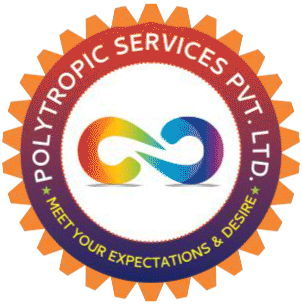ABOUT THE PROGRAMMING LANGUAGE:
Programming languages are one kind of computer language, and are used in computer programming to implement algorithms. Most programming languages consist of instructions for computers. Computer programming languages allow us to give instructions to a computer in a language the computer understands. Just as many human-based languages exist, there are an array of computer programming languages that programmers can use to communicate with a computer. The portion of the language that a computer can understand is called a “binary.” Translating programming language into binary is known as “compiling.” Each language, from C Language to Python, has its own distinct features, though many times there are commonalities between programming languages.
C is a very powerful and widely used language. It is used in many scientific programming situations. It forms (or is the basis for) the core of the modern languages Java and C++.
C++ is a very popular language for performance-critical applications that rely on speed and efficient memory management.
It’s used a wide range of industries including software and Game development, VR, Robotics, and scientific computing.
Visual Basic is a third-generation event-driven programming language first released by Microsoft in 1991.
It evolved from the earlier DOS version called BASIC. BASIC means Beginners' All-purpose Symbolic Instruction Code. Since then Microsoft has released many versions of Visual Basic, from Visual Basic 1.0 to the final version Visual Basic 6.0. Visual Basic is a user-friendly programming language designed for beginners, and it enables anyone to develop GUI window applications easily.
COBOL stands for Common Business Oriented Language. It is imperative, procedural, and object-oriented.
A compiler is a computer program that takes other computer programs written in a high-level (source) language and coverts them into another program, machine code, which the computer can understand. COBOL takes data from a file or database, processes, and outputs it. In short: COBOL takes data in, computes it, and outputs it afterwards.
C# (pronounced "See Sharp") is a modern, object-oriented, and type-safe programming language. C# enables developers to build many types of secure and robust applications that run in .NET. C# has its roots in the C family of languages and will be immediately familiar to C, C++, Java, and JavaScript programmers.
Java programming language is developed by Sun Microsystems. Java is object oriented, platform independent, simple, secure, architectural–neutral, portable, robust, multi-threaded, high performance, distributed and dynamic. It can be used to develop software and also applets. A java program can run on various operating systems without rewriting the code. And this is possible because of java run-time environment which tells the operating system what to do by interpreting the java code.
The abbreviation of PHP initially stood for Personal Homepage. But now it is a recursive acronym for PHP: Hypertext Preprocessor. It is a widely-used open source general-purpose scripting language that is especially suited for web development and can be embedded into HTML.
Python is an interpreted, object-oriented, high-level programming language with dynamic semantics. Its high-level built in data structures, combined with dynamic typing and dynamic binding, make it very attractive for Rapid Application Development, as well as for use as a scripting or glue language to connect existing components together. Python's simple, easy to learn syntax emphasizes readability and therefore reduces the cost of program maintenance. Python supports modules and packages, which encourages program modularity and code reuse.
The R programming language is used for data analysis, data manipulation, graphics, statistical computing and statistical analysis. The R programming language and development environment are open source and have grown in popularity.
WHO CAN APPLY(ELIGIBILITY):
BCA/BSC-IT/MCA/CS Engineering/IT Engineering
WORKSHOP HIGHLIGHT:
- Learn and interact with one of the respected authorities in the field of Web Development.
- Practical demonstration for each and every module mentioned in course contents.
- All the content mentioned is covered side by side by practical’s.
- Improve your job prospects and get an edge over your counterparts.
- Covers all the basics for development of a client side technology.
- Free tools & software's used by professional designers.
- Study material to each student including books, DVD’s, and software kit.
- Hands on Demonstrations of Latest Animation Techniques & Tools.
- All study material would be provided
- All the necessary software’s would be provided.
- Workshop will be of 12 Hours (2 Days, 6 hrs each day ).
TRAINING METHODOLOGY:
Theory, Practical (Emphasison Practical and Current Market Requirement)
WHO CAN ATTEND:
- College students seeking career in Website Development.
- Person having interest in Designing.
- Education Faculty & Staff.
- Students from any branch can attend the workshop.
CERTIFICATION AND CERTIFICATE POLICY:
Certificate provided in this course would be certified by Polytropic Services and would be provided to the candidates who have attended the classes.
FEES:
